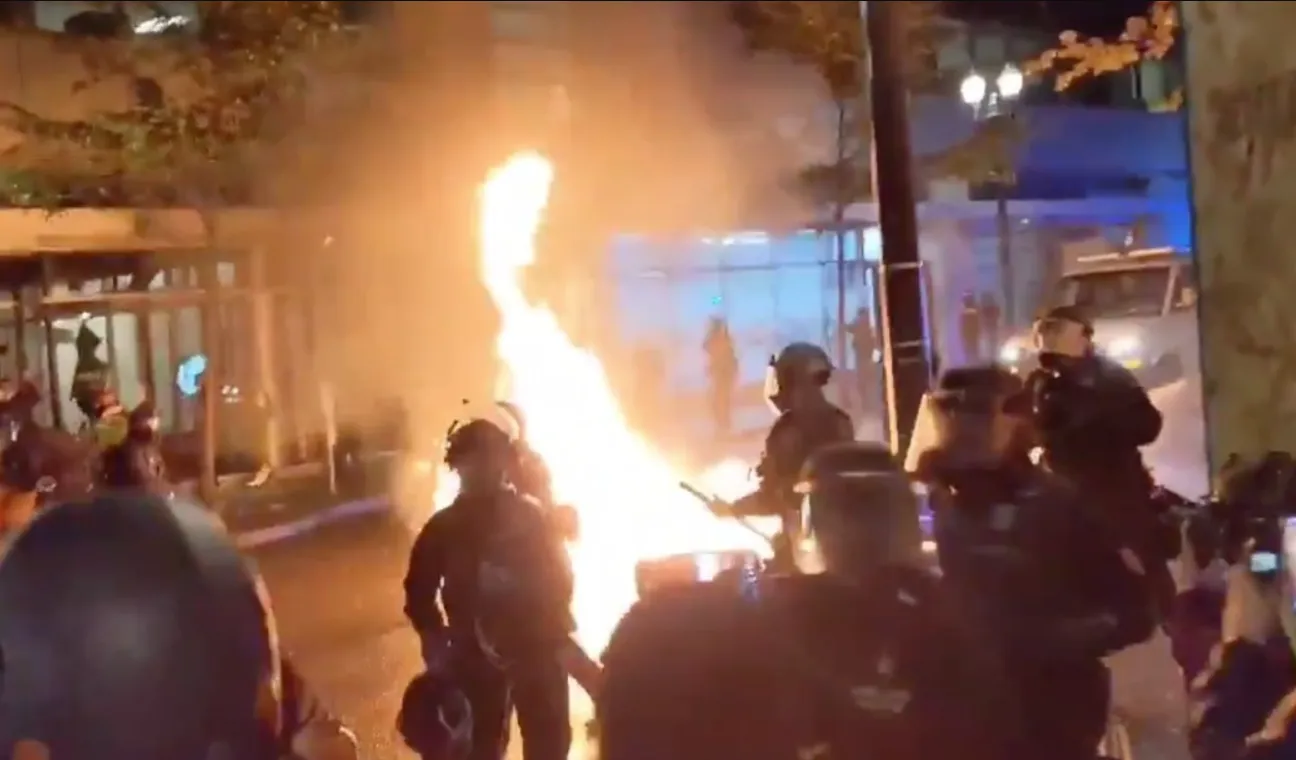PORTLAND, Ore. — Portland has endured more than 100 consecutive nights of unrest outside the city’s Immigration and Customs Enforcement (ICE) facility, creating a national flashpoint in the debate over protest, policing, and federal intervention. What began as demonstrations against immigration enforcement has escalated into nightly clashes, accusations of political failures, and a full-scale federal response.
Federal Troops Deployed
After months of unrest, President Donald Trump authorized the deployment of 200 National Guard troops to Portland, tasked with protecting ICE facilities and personnel. The move came amid growing reports of violence, including fireworks, bottle rockets, rocks, and lasers directed at officers, as well as barricades blocking vehicles.
While Trump framed the action as necessary to restore law and order, Oregon officials sharply opposed the move. Sen. Ron Wyden of Oregon called the deployment “an authoritarian takeover,” accusing the president of intentionally provoking conflict. Gov. Tina Kotek also resisted federal involvement, maintaining that Portland’s situation did not justify military force.
Also Read
ICE Officials Describe Escalation
Inside Portland’s ICE office, staff members say they have lived through months of attacks. Cammila Wamsley, director of the local ICE facility, told Fox News the violence has been relentless and that city leaders have restricted police from intervening effectively.
According to Wamsley, staffers have endured everything from shattered windows to physical assaults on officers outside the facility. “It’s frustrating to watch colleagues attacked while police stand by, unable to act,” she said.
Her comments highlight a central tension: federal officers insist they lack authority to intervene beyond protecting their buildings, while Portland police face political limits on how far they can go against protesters.
Journalists and Counter-Protesters Targeted
The unrest has not only pitted protesters against police and federal agents but also swept up members of the press. Several conservative journalists covering the demonstrations have been harassed or assaulted.
One reporter was arrested while documenting clashes, drawing accusations of political bias against local law enforcement. Another journalist, Katie Daviscourt, reported being struck in the face with a flagpole by an Antifa protester, leaving her with a black eye. Although police identified her alleged attacker, she says the individual was released shortly after and escorted to an Antifa “safe space.”
Incidents like these have deepened accusations that Portland leaders are more lenient toward left-wing demonstrators while cracking down on those who oppose them. Critics argue that a true “safe space” for violent offenders would be jail, not protected protest zones.
Antifa’s Role and National Debate
For critics of Portland’s leadership, the unrest is seen as the inevitable outcome of years of tolerance for Antifa and other far-left groups. They argue that by declining to prosecute violent demonstrators or restricting police authority, city officials allowed the groups to grow bolder and more organized.
Antifa supporters argue the movement is decentralized, made up of activists opposing fascism and state oppression. But opponents describe it as a coordinated network prone to violence, citing Portland’s nightly unrest as proof.
The debate has spilled onto national airwaves. Conservative outlets portray Portland as a cautionary tale of progressive governance gone wrong, while liberal critics accuse Trump of exploiting the situation for political gain.
Political Fallout
The federal deployment of the National Guard in Portland has become a key political battleground. Trump supporters claim it proves the president’s willingness to confront chaos that local leaders ignore. Democrats warn it represents dangerous federal overreach that undermines local control.
Oregon’s elected leaders, including Sen. Wyden and Gov. Kotek, insist that Trump’s actions only inflame tensions. Yet ICE officials and federal staff argue the violence has been ignored for too long and that help was desperately needed.
The Human Toll of 100 Nights
Behind the political sparring are the daily realities faced by Portlanders. Residents near the ICE facility have endured noise, street closures, and property damage. Business owners complain that protests and police blockades have kept customers away.
Community trust in law enforcement remains fractured. Critics on the left accuse police of excessive force during earlier protests, while critics on the right accuse them of standing down under political pressure. Both sides feel abandoned in different ways.
The protests themselves have shifted over time. What began as demonstrations against immigration enforcement expanded to broader grievances about policing, housing, and federal power. Night after night, small groups have continued to gather, even as crowds ebb and flow.
Lessons and Warnings
The “100 Nights of Violence” in Portland has become symbolic far beyond Oregon. Supporters of Trump cite it as proof that progressive cities cannot manage public safety. Progressive leaders counter that federal overreach threatens civil liberties and escalates unrest.
Observers say the city illustrates what happens when political polarization, distrust in institutions, and economic stress collide. Portland’s unrest is no longer just about ICE or Antifa — it has become a microcosm of America’s broader struggles.
Looking Ahead
With National Guard troops now on standby and court challenges to Trump’s order pending, the future of Portland’s unrest remains uncertain. If protests continue, the federal presence may intensify. If local leaders find new strategies, the demonstrations could dissipate.
But after more than 100 nights, one fact is clear: Portland’s unrest has left deep scars on the city’s politics, its neighborhoods, and its national reputation.












